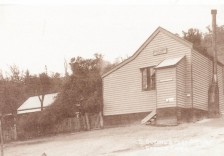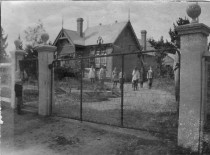SCHOOLS
During the first years of European settlement in the Yarra Valley the stations of the early squatters were far apart. Children were taught at home, usually by their mother, as Andrew Ross found when he visited the Dicksons at Gulf Station in 1852. Alice and John Dickson had five children and Ross said he found Mrs Dickson was holding her usual lessons for the children and it was pleasing to see that they had made fair progress under her tuition, although they were young. Andrew Ross had been appointed to the first school in Evelyn County at Kangaroo Ground which opened in 1851. He would have been interested in attracting such children to his school.
For many years under the New South Wales legislation and then, from 1853, under Victorian legislation, religious bodies played a large role in supply of education facilities and staff and were coordinated by a Denominational School Board.
In 1862 Richard Heales (after whom Healesville is named) introduced a bill in Parliament that became the Act for the better maintenance and establishment of Common Schools in Victoria, 1862. Committees comprising local citizens were appointed in defined districts to oversee the operation of the school and appointment of teachers, and were responsible to the Board of Education for Common Schools. Half the cost of the buildings and furnishing was to be supplied by the local community. The emphasis was on secular education.
Grant's Land Act of 1865 opened Crown Land for selection in Christmas Hills, Steels Creek and Burgoyne (Yarra Flats). The resulting smaller properties brought more families to the area creating a demand for more schools. Families at Yarra Flats during this period included Bell, Herbert, Williamson and Evans and they set out to build a local school.
In 1873 Victoria was the first Australian colony to introduce a centralised primary school system with free, compulsory and secular education. The Education Act of 1872 abolished school fees and attendances increased by approximately fifty per cent. The Board of Education was replaced by a Department of Education under a Minister of Public Instruction. Church authorities were able to retain their existing schools under an independent system but government aid for them ceased in January 1874. Schools now became known as State Schools. The local committees were replaced with Boards of Advice for each district. They were able to select teachers for appointment, subject to Department approval; were responsible for the maintenance of buildings and furnishings; and could grant holidays.
__________________________________________________________________________________________________________________________________
Andrew Ross, Reminiscences of Andrew Ross, Andrew Ross Museum, 3 ed. 1995






